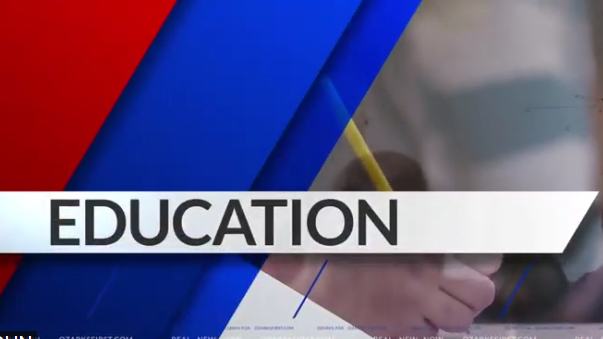[COVID-19\School Budgets]
Albert Shanker Institute President and American Federation of Teachers President Randi Weingarten says: “We can’t forfeit our students’ future because of the coronavirus pandemic.”
Photo: YouTube
The coronavirus pandemic threatens to devastate public school budgets, but there is a viable path to minimizing the damage, according to a new report released today by the Albert Shanker Institute.
The report calls on the federal government to stem the short-term impacts of the pandemic, while relying on state actions to quicken the recovery of funding levels and build up infrastructure to weather future downturns.
To chart a path out of the current crisis, the report’s authors present data showing the persistent negative effect of the 2007-09 Great Recession on education funding, which, they find, was widespread and generally worse for higher-poverty districts. By 2017, the last year for which national data are available, funding in many states still had not recovered to its pre-recession levels.
For years, too many states failed to invest in their public schools, and, as a result, they were extremely vulnerable when the recession hit, and ill-equipped to recover quickly when the economy improved.
Eyeing lessons learned, the report’s authors lay out a plan to address the impact of the pandemic on school funding. Crucially, the plan does not consist solely of a federal assistance package. States will have to reform their own school finance systems to recover fully. Accordingly, the recommendations are divided into two sections: short-term (federal stimulus) and longer-term (state policy changes).
“States cannot continue business as usual,” explains co-author Bruce Baker. “If they once again rely on federal aid to help them during this recession and recovery without putting their own houses in order, they risk prolonging the damage, and they will also be less prepared to weather economic downturns in the future.”
The authors acknowledge the costs, financial and political, of their recommendations. The alternative, however, may be the second “once-in-a-lifetime” education funding disaster within a 15-year period, with particular harm to our nation’s most vulnerable students.
“The seniors graduating this spring started kindergarten in the fall of 2007,” says Baker. “Most of these students have spent almost their entire K-12 careers in schools with less funding than there was when they started. If this happens again, it will be because we let it happen.”
According to the authors, the federal response to the recession, specifically the 2009 stimulus package, was successful insofar as it gave states’ economies more time to recover, so that cumulative cuts were less severe. But they also show how the short duration of the aid (two years) created a fiscal “cliff” when the funding ran out, which necessitated drastic cuts in state funding occurring all at once. And these cuts caused disproportionate harm to higher-poverty districts, which are more dependent on state revenue.
The share of states’ economies devoted to K-12 education dropped during the recession and has not recovered (it is lower than it was in 1993), while state and local revenue as a percentage of personal income has been declining for 25 years.
Starting immediately, the report recommends:
A large federal aid package. Substantial K-12 federal fiscal stabilization funds, over and above those already provided by the CARES Act.
- Multi-phase allocation. Distribution of aid in two parts or “phases,” beginning with a substantial allocation in years one and two (Phase I) and followed by a three to five year phase-down effort (Phase II). This will avoid the “fiscal cliff” problem of the 2009 federal stimulus.
- Equitable distribution. This federal assistance program should be distributed in a manner that is equalized for local capacity and targeted according to student needs.
- “Eligibility” requirements. States must abide by certain rules and constraints, including specific requirements ensuring that any education cuts not cause disproportionate harm to higher-poverty districts, and that states do not impose fiscal austerity measures while receiving federal aid.
This federal aid package will be crucial during the first few years of the coming recession, but the report’s longer-term recommendations focus on what states should be doing once their economies begin to rebound from the current recession (although much of the planning can and should begin immediately):
- Increase or restore fiscal effort levels. States should, through federal policy incentives if necessary, move to restore their fiscal effort levels to those that prevailed prior to the Great Recession. And states with low effort levels should increase effort. This may require tax increases and/or broadening of tax bases.
- Build up budget reserves. When states have money in reserve, and the flexibility to spend those funds as needed, this can be an enormous help in avoiding school layoffs and program cuts. States should not build up reserves by cutting services.
- Allocate funding more progressively. Funding formulas should allocate education revenue progressively, with higher-poverty districts receiving more funding than lower-poverty districts. This will ensure that higher-poverty districts, which are hit harder during downturns, are better-equipped to recover and weather future downturns.
- Balance revenue “portfolios.” States should balance their state and local tax revenue configurations—income, sales and property tax—more strategically and less ideologically. This can serve to hedge against risk of massive budget shortfalls during bad economic times, while shoring up revenue streams during good times.
Albert Shanker Institute President and American Federation of Teachers President Randi Weingarten says: “We can’t forfeit our students’ future because of the coronavirus pandemic. Children didn’t create the coronavirus, nor are they responsible for how inept our federal government has been in its response. And this report makes clear a generation of students will be lost if we fail to learn the lessons of the Great Recession.
“The threat is heightened because of the reckless cheering of Mitch McConnell this week for states to enter bankruptcy and embrace economic ruin, which would lay waste to the future of public services for decades to come. That sort of wholesale evisceration has been a long-held dream of extremists who want to privatize, or simply end, public education, public health and safety, and other essential services we rely on.
“Unless we act now to secure federal and state aid for public schools, we are destined to add to the toll austerity has wrought on kids over the last decade: higher class sizes, widening inequality and more segregation. The challenges are immense, but we are not powerless actors subject to the whims of history—we can intervene if we’re serious about funding our kids’, and our nation’s, future.”
Follow AFT President Randi Weingarten: http://twitter.com/rweingarten






